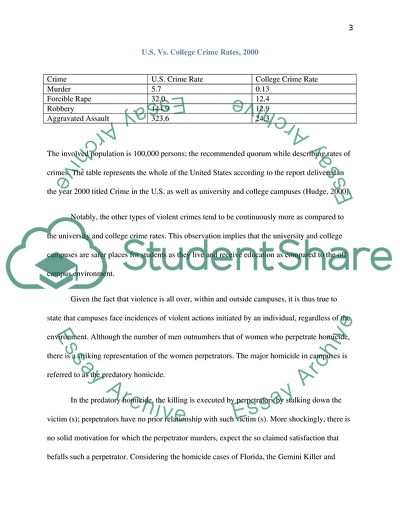Cite this document
(Campus Crime: Legal, Social, and Policy Perspectives Report Example | Topics and Well Written Essays - 1500 words, n.d.)
Campus Crime: Legal, Social, and Policy Perspectives Report Example | Topics and Well Written Essays - 1500 words. https://studentshare.org/social-science/1768627-violence-on-college-and-university-campuses
Campus Crime: Legal, Social, and Policy Perspectives Report Example | Topics and Well Written Essays - 1500 words. https://studentshare.org/social-science/1768627-violence-on-college-and-university-campuses
(Campus Crime: Legal, Social, and Policy Perspectives Report Example | Topics and Well Written Essays - 1500 Words)
Campus Crime: Legal, Social, and Policy Perspectives Report Example | Topics and Well Written Essays - 1500 Words. https://studentshare.org/social-science/1768627-violence-on-college-and-university-campuses.
Campus Crime: Legal, Social, and Policy Perspectives Report Example | Topics and Well Written Essays - 1500 Words. https://studentshare.org/social-science/1768627-violence-on-college-and-university-campuses.
“Campus Crime: Legal, Social, and Policy Perspectives Report Example | Topics and Well Written Essays - 1500 Words”. https://studentshare.org/social-science/1768627-violence-on-college-and-university-campuses.


